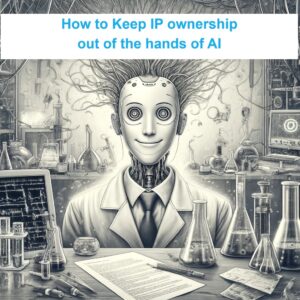
How to protect intellectual property (IP) rights has become a critical concern for developers and businesses alike when the development process involves use of artificial intelligence. AI’s capability to generate outputs independently can complicate IP rights, particularly when distinguishing between human and machine contributions. Effective record-keeping not only clarifies the role of human creators but also strengthens legal standing in potential IP disputes. For developers and businesses, these records prove invaluable in demonstrating the inventive and creative steps undertaken by humans, rather than by the AI alone.
Background – Current State of the Law
The current state of copyright and patent protection for works created using artificial intelligence (AI) is a complex and evolving area of law. Generally, copyright law requires a human author to claim ownership, hence works generated solely by AI without substantial human creative input typically do not qualify for copyright protection. In contrast, patent law focuses on the novelty, utility, and non-obviousness of inventions, irrespective of whether they were aided by AI. However, attributing inventorship to AI systems directly is still not widely accepted. Most patent authorities require a human inventor.
The Importance of Record-Keeping
Below are some guidelines for how to maintain appropriate records that substantiate human input and creativity in AI development:
-
- Planning and Design Phases: Record all conceptual and design decisions, including the objectives of the AI application, the algorithms selected, and modifications made during the development. Documenting the rationale behind each decision and how it aligns with project goals is crucial.
- Individual and Team Roles: Log specific contributions of each team member, detailing their roles in problem-solving, coding, and decision-making processes. Use tools for version control to track who made what changes and when.
- External Contributions: If third-party services or consultants are employed, document these interactions extensively, noting the contributions and how they influence the project.
- Use of Version Control: Implement robust version control systems to track changes in code and development artifacts throughout the project. This not only provides an audit trail but also helps in demonstrating the progression and evolution of the AI system.
- Secure Logging: Secure logging mechanisms should be used to record interactions with the AI system, ensuring that all data manipulations and decision points are traceable and attributed correctly.
Conclusion
For AI-assisted projects, rigorous and systematic record-keeping is not just a best practice—it is a necessity for protecting intellectual property rights. By clearly documenting the human input and creative contributions throughout the development process, businesses can safeguard their innovations and secure the legal recognition they deserve. As AI continues to reshape industries, adapting these practices will ensure that creators can confidently navigate the complex landscape of IP law.

